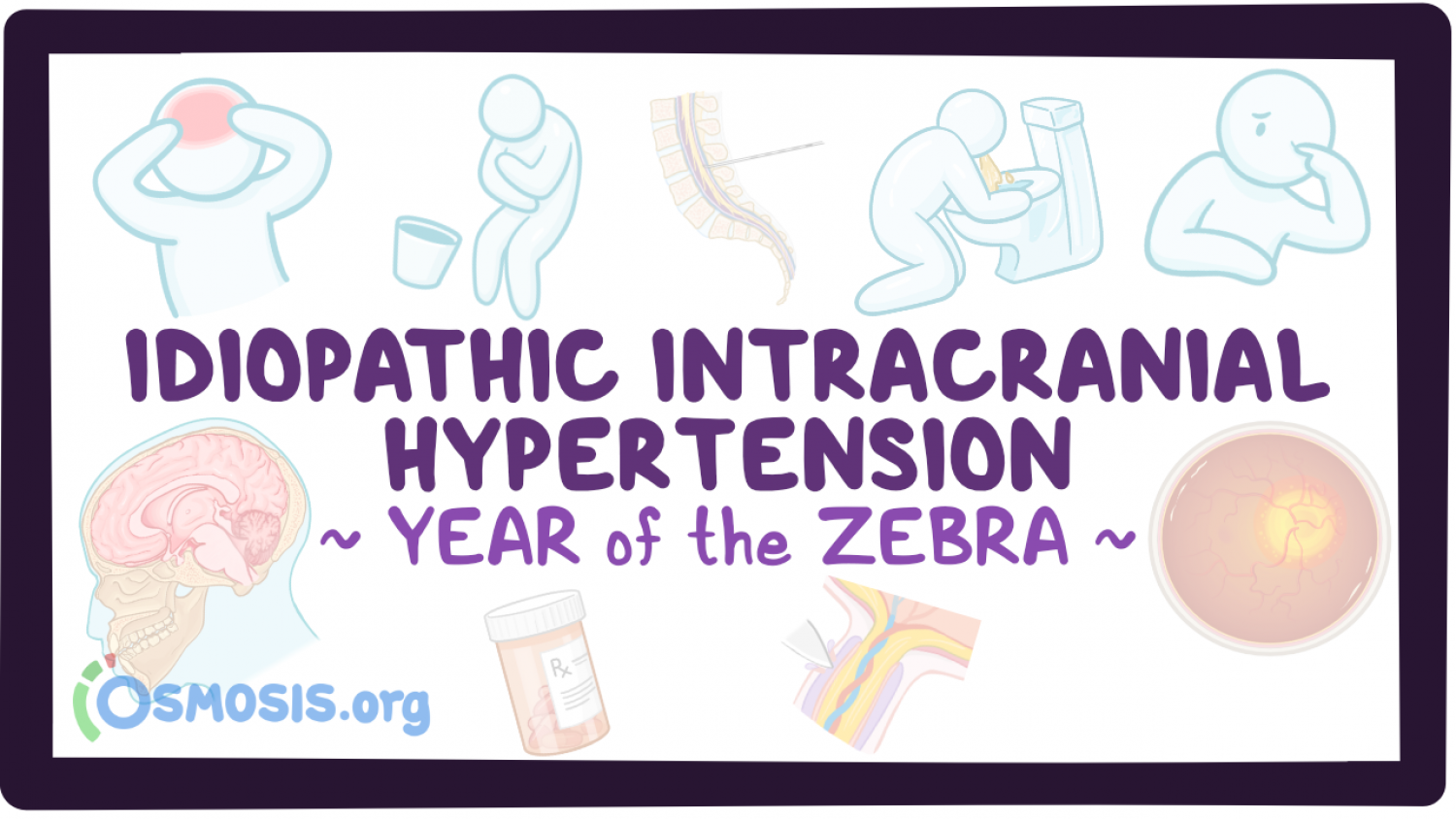
Rare Disease Education: Idiopathic Intracranial Hypertension
Editor: Kelsey LaFayette, DNP, RN, FNP-C
"When you hear hoofbeats, think of horses, not zebras,” is a common saying in medical education that means you should think of common conditions first, instead of rare ones, in making a diagnosis. “Rare” is a relative term though and about 7,000 rare, or "zebra," conditions affect more than 350 million individuals worldwide. Although these conditions collectively affect an enormous number of people, each of these conditions individually is rare enough that it can be difficult to secure the resources to study them and to develop treatments and cures. Likewise, awareness of rare conditions may be low and health care professionals may not be familiar with their signs and symptoms making it more difficult to reach a correct diagnosis and provide effective treatments.
To increase knowledge about rare conditions, Osmosis and the National Organization for Rare Diseases (NORD) have collaborated on an initiative to bring education and awareness to the public. We are excited to be a part of this initiative because we believe everyone deserves quality health care, no matter how rare their condition.
Zebra of the Week: Idiopathic Intracranial Hypertension
When a balloon fills with water, the pressure inside rises progressively, stretching the material and compressing anything that may be within. If the pressure keeps building, this may damage the structures that resists least, whether inside or outside. This is essentially the mechanism of idiopathic intracranial hypertension, wherein fluid builds up inside our central nervous system. In our analogy, the fluid flowing is the water building up, structures within are the brain and its nerve roots, and the “material” around the balloon is our meninges, albeit being much less stretchy than a balloon’s walls.
Idiopathic intracranial hypertension has no known cause. Risk factors include being female, young, and overweight. However, the disease can develop in both males and females of all ages and body types. The most common symptom is often excessively painful or frequent headaches, sometimes associated with nausea and vomiting, that are not relieved by medication. There can also be back and neck pain, a ringing in the ears called tinnitus, and visual disturbances, all of which can be explained by the increased intracranial pressure. Inherently, symptoms can be non-specific and misdiagnosis is a real risk for many patients.
To learn more about the diagnosis and treatment of idiopathic intracranial hypertension, watch the dedicated Osmosis video on YouTube and Osmosis.org
Meet Kellie White
Kellie White is a successful product manager at Osmosis.org from Elsevier. She was going in for a regular checkup, not expecting it to become the start of her rare disease journey. With her diagnosis of idiopathic intracranial hypertension made and thankfully controlled, Kelly tells her story, adding in tips, lessons, and reassurance for others who may be in a similar situation. Reaching further begins from within the team; we are proud to share Kellie’s story in the video above.
Organization Taking Strides
Like countless families before them, the Tannes learned through personal experience that chronic intracranial hypertension is frequently clouded by misdiagnoses, mismanagement, and general misunderstanding. After their daughter was diagnosed, Emanuel and Amy Tanne also realized how little resources were allocated to research on the subject, so they decided to take things into their own hands. They founded the Intracranial Hypertension Research Foundation in 2001, making it the only non-profit organization in the world solely devoted to supporting the cause of chronic intracranial hypertension.
They have been providing reliable information about chronic idiopathic and secondary intracranial hypertension, as well as the latest news on current research projects, clinical trial opportunities, conferences, and the Intracranial Hypertension Patient Registry at Oregon Health & Science University, the first and only patient registry for chronic intracranial hypertension in the world. The foundation provides information for both patients and medical professionals; sponsors scientific conferences; and supports clinical trials and research.
To find out more about their activities and discover how you can make a difference, visit their website.
